Why are ships so slow? A typical trip to the store probably sees your car go faster than a typical merchant ship can, and even the fastest warship at full speed would be passed by a typical truck on the highway.1 For that matter, ship speeds have stayed roughly the same for at least the past half-century, if not longer.
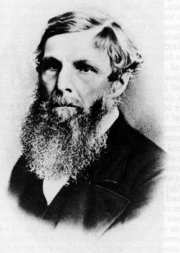
William Froude
The basic reason for all of this is that water is very dense and pushing through it is difficult. But to understand this, we'll need to look in more detail about the sources of ship resistance, and how all of this was figured out. Before the mid-19th century, nobody was quite sure how to predict a ship's performance. Understanding of fluid dynamics wasn't nearly advanced enough to pull it off from first principles (and still isn't today) and while many people had hit on the idea of using models, they had been flummoxed by their inability to correlate the results they got at scale with full-sized ships. The problem was eventually solved by an English engineer by the name of William Froude, who began as an associate of Brunel and did important work on ship rolling in connection with Great Eastern before turning his attention to the problems of hydrodynamics. He proved that most of that resistance could be broken down into two major components: frictional resistance and wavemaking.2
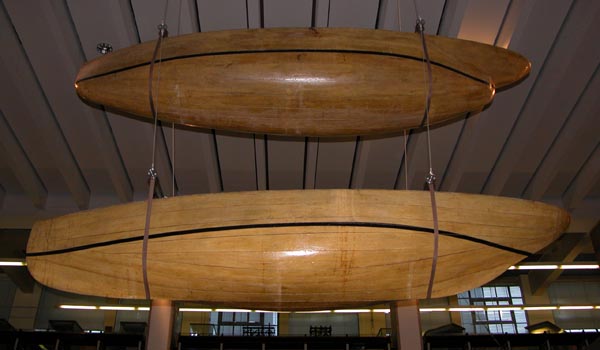
Swan (top) and Raven, at the Science Museum in London
Froude began by building a pair of models, known as Swan and Raven. Swan had relatively blunt ends, while Raven's ends were much finer. Models of each form were built in lengths of 3', 6' and 12', and towed in creeks and harbors, with careful attention paid to make sure that natural water flow didn't skew the results. Froude noticed that the relative wave pattern for each ship was the same when running at a speed proportional to the square root of its length. So, for instance, the wave produced by the 3' long model was 3' long at a speed of around 2.3 kts, with the crests at both bow and stern. The 6' models had one wave along their waterline at 3.3 kts, and the 12' models reached the same condition at 4.6 kts. More importantly, the resistance per pound of each model at these speeds was very similar, putting model testing on a sound theoretical basis. Froude made another important discovery during these tests. Contrary to general belief, there was no one optimum hull form. Instead, Swan did best at high speeds, Raven at low speeds. This put the final nail in the coffin of any attempt to use full-scale testing to figure out questions of hull form.
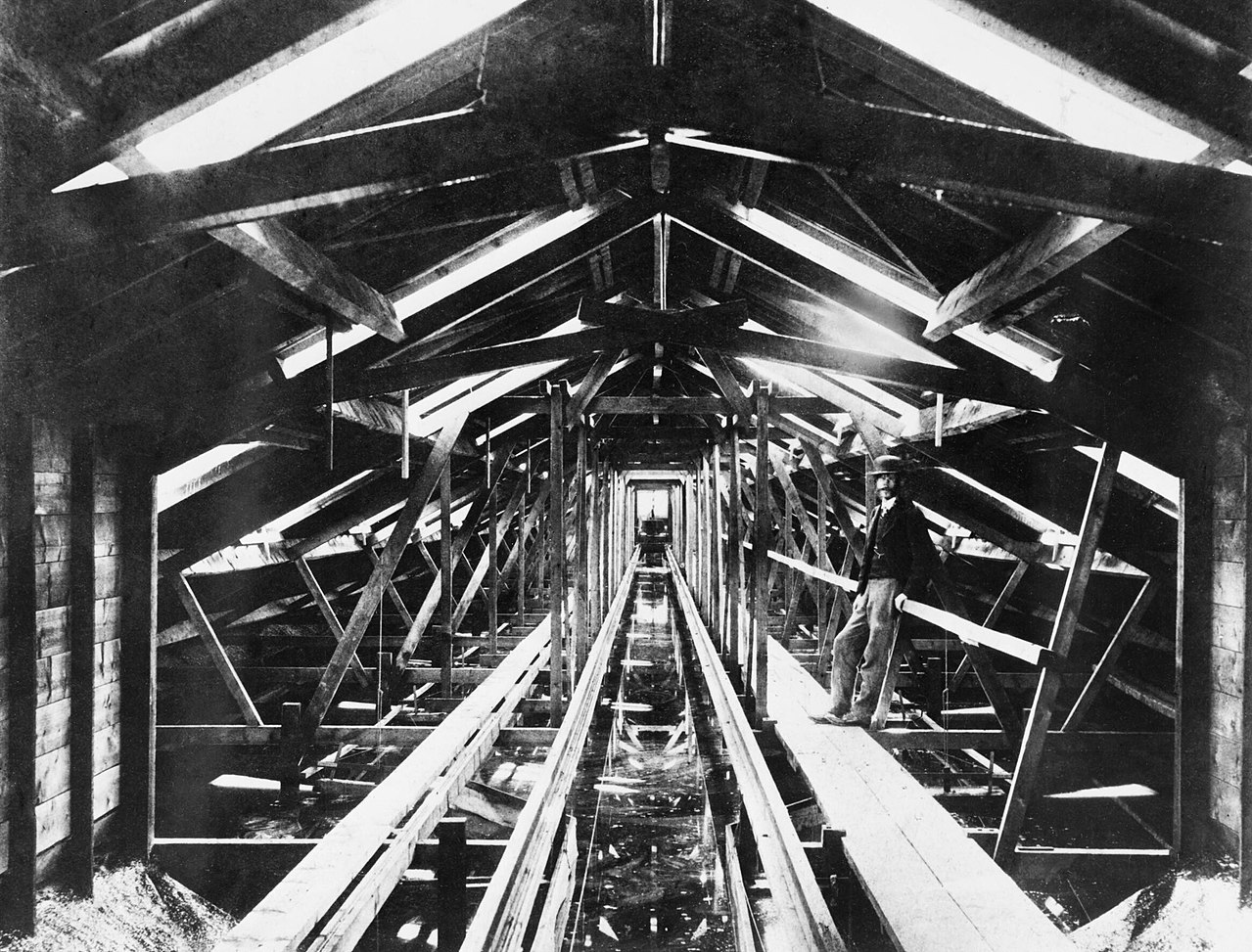
Froude's first towing tank at Torquay
Froude went to the Admiralty, and got 2,000£ to build a special tank for towing experiments at Torquay in 1870, volunteering his services to run it for free. Two years later, the tank was finished, with Froude paying the cost overruns out of his own pocket. His first task was to deal with the problem of friction, which he did by towing planks of various sizes and finishes through the water. As they were thin, they produced only very small waves, allowing friction to dominate. With this data and his results from Swan and Raven, he was able to make accurate predictions of the resistance of full-sized ships, validated by trials where the sloop Greyhound was towed and the force required to pull her measured. Froude then turned his attention to testing propellers, building a dynamometer for the purpose that remained in service until the mid-1930s. Every ship built since the 1870s owes a debt to Froude and his work.3
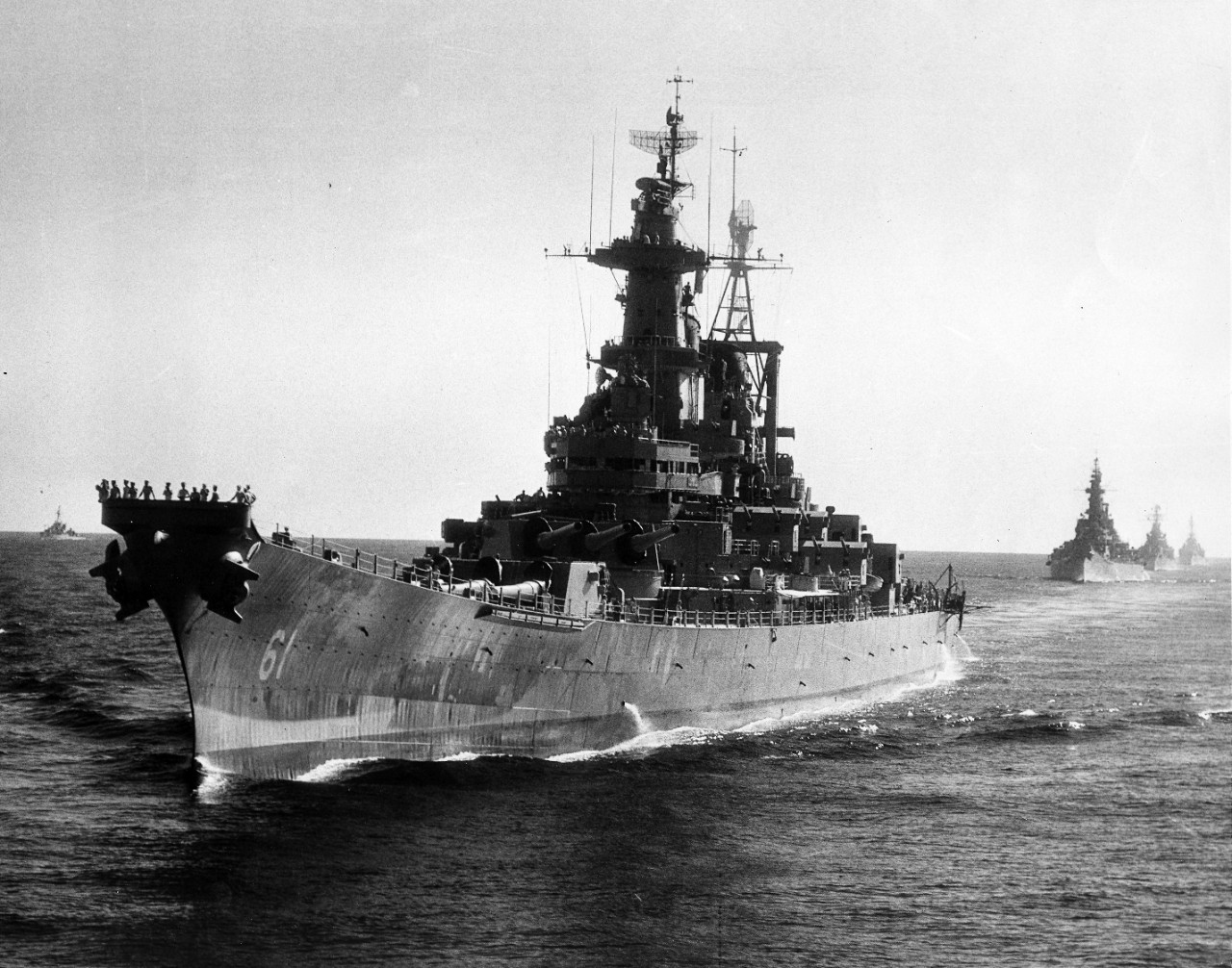
Iowa at relatively high speed on a calm sea shows a fairly clear wave pattern
But how does all of this apply to our original question? While ships may not have the relatively straightforward relationship between speed and resistance that planes do,4 there are some principles we can take away from all of this. The speed at which a ship produces a wave equal to its own length is called the hull speed. The value of hull speed in knots is approximately 1.34 times the square root of the ship's waterline length in feet. Generally, a ship that is trying to go faster than this value will see a sharp rise in resistance, as it is essentially having to climb uphill as it pushes through the water.5 And hull speeds for modern warships tend to cluster in the 30-kt region where the actual speeds are. Iowa, quite large even for a battleship, has a hull speed of 39.3 kts, which is somewhat higher than her actual maximum speed, around 33 kts. The upshot of all of this is that a longer ship of the same displacement will go faster on the same power, and as a result, it was fairly common for naval architects to lengthen ships when they needed extra speed. On occasion, extra power was used instead to compensate for a shorter ship.
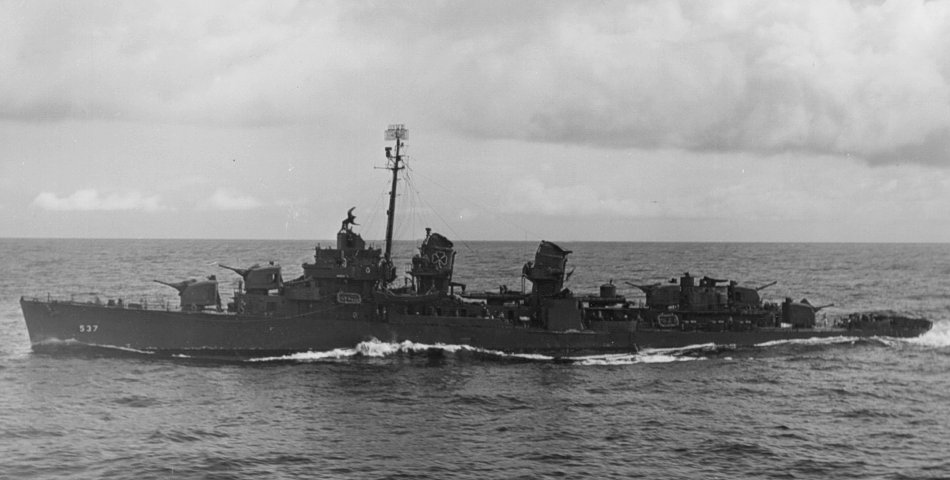
A Fletcher class destroyer at speed, showing very clear waves
This isn't to say that it's impossible to drive a vessel past its hull speed, and it was common for WWII-era destroyers to be able to operate well above that point. The Fletcher class, broadly contemporary with Iowa, was capable of as much as 35 kts on trials6 with a hull speed of only 25.7 kts. However, each vessel displaced 2,700 tons and had 60,000 SHP, for a total of 22.2 SHP/ton. Iowa had only 212,000 SHP for her 54,000 tons, and could make almost 33 kts on her meager 3.9 SHP/ton. Somewhere in between were the Cleveland class light cruisers, whose top speed was very close to their hull speed of 32.8 kts, and which had 8.4 SHP/ton. Even modern ships fall broadly on this curve. An Arleigh Burke can make 31 kts with a hull speed of 28.9 kts, on 12 SHP/ton, while a Ticonderoga operates very close to hull speed and has the same power-to-weight ratio as the Cleveland.
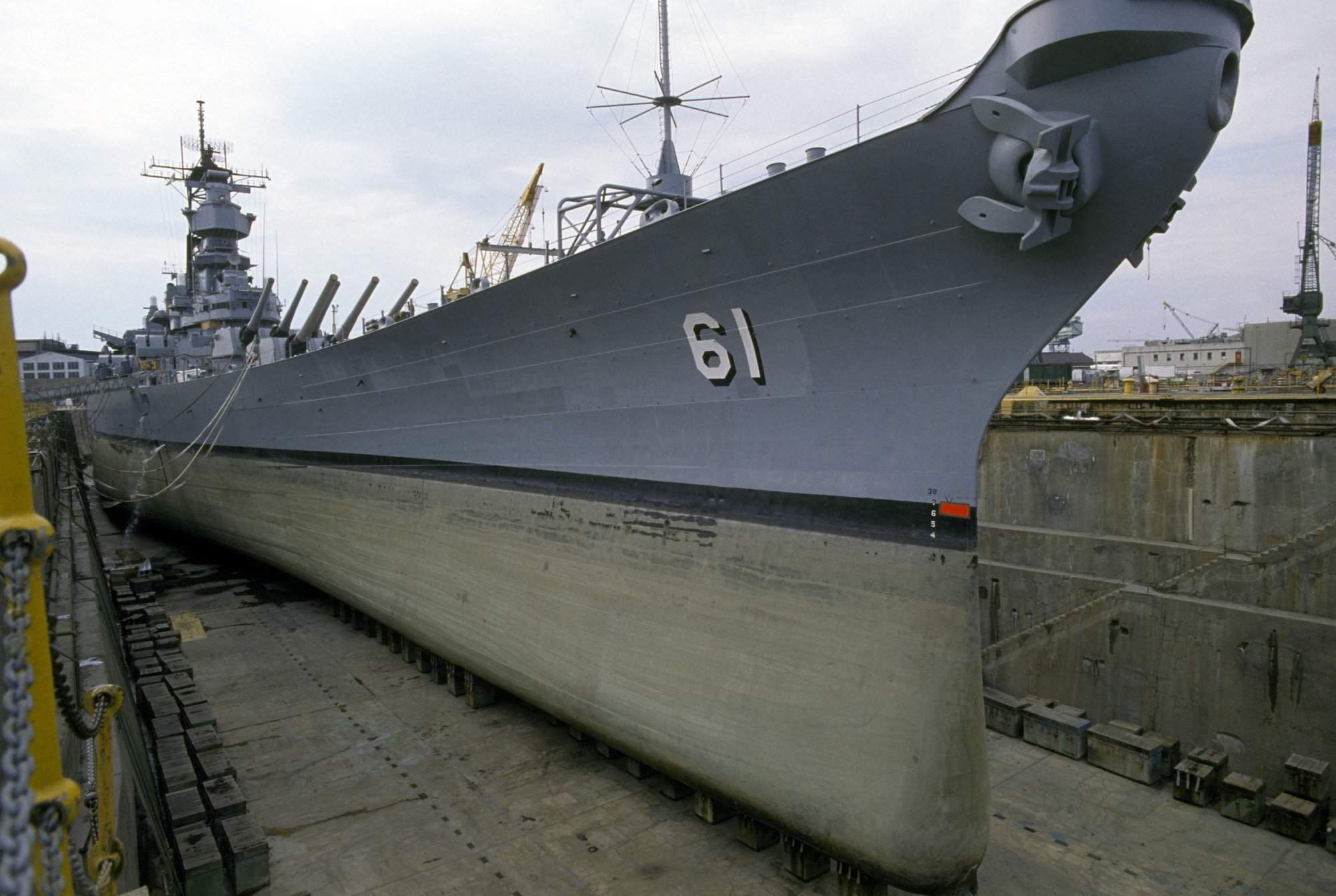
Iowa in drydock
Obviously, this is only the very simplest of overviews. Ship speed is not merely a matter of length, displacement, and size. Any number of other factors play a part. Underwater hull form is the biggest, and it was often driven by factors other than minimizing resistance. For instance, the need to support heavy engines and turrets, not to mention underwater protection, often made ships fuller amidships than the hydrodynamic optimum. Ultimate top speed frequently had to be traded for performance in rough water, as in the Arleigh Burke class. For that matter, the ability to stretch a ship's length might be limited by drydocks, or even raw structural concerns. And then there's the fact that ships don't always displace the same amount, the condition of the hull, and even the depth of the water the ship is in. But the basics, that longer ships require less power for a given speed, and that power required is sharply nonlinear with top speed, are simple enough. A full treatment of all of this can be found in a naval architecture textbook (I used Modern Ship Design, although any book should work as well), although I might return to the subject in the future.
1 Note that I'm only talking about displacement ships here. Planing hulls operate on different mechanisms, which fall outside the scope of this post. Submarines also work rather differently, although I'll at least mention them. ⇑
2 For those familiar with other fields of fluid dynamics, wavemaking resistance is caused by the pressure changes that result from the movement of the water around the ship, the same source as the majority of drag in air. There's obviously no equivalent to induced drag for displacement ships, though. ⇑
3 One of these facilities is the USN's NSWC Carderock. ⇑
4 Yes, the full resistance equation does have a V2 term like it does for air drag, but the coefficient is heavily dependent on speed. ⇑
5 This is all a gross oversimplification. Modern naval architects usually don't use hull speed, preferring to talk about Froude numbers and the like. But I am not a naval architect, and this whole subject is complicated enough that I'll take any rule of thumb I can get. ⇑
6 It's worth pointing out that this is speed in calm water, and would have been significantly less in even moderately rough seas. ⇑

Comments
"Isambard Kingdom Brunel" is definitely one of the most steampunky names possible, which is fitting.
The Great Eastern is a fascinating little ship; terrible at what she was designed to be, she ended up securing her place in history as the first cable-layer.
@blackshoe
He also looked the part: https://pbs.twimg.com/media/D3s_aDdXsAAzc6Z.jpg
for more history of the evolution of naval architecture, see this book: https://www.amazon.com/Ships-Science-Architecture-Scientific-Transformations/dp/026251415X
I'm not sure it makes any sense at all to describe Great Eastern as little, as that's one thing she definitely wasn't. As for her cable-spinning career, covering that is somewhere in my plans.
This is something I'd love to see more about, because you almost never see it discussed by people who just like the big guns going boom. And digging into a proper naval architecture book on my own is sadly off the table at the moment.
Is it right to say that “Isambard Kingdom Brunel” had the most steampunk name and look? Or would it be more correct to say that steampunk has adopted Brunelian names and appearance?
Just like you can't really say that Lord of the Rings is a classic Sword and Sorcery epic fantasy novel. Well actually we define the classic Sword and Sorcery epic fantasy novel as how closely it resembles Lord of the Rings.
@echo
The problem is that this is a topic which is hard to discuss at greater length without getting into lots of messy math, and I don't want to go there.
Typo hunt:
"associate of Burnel" should be "associate of Brunel," I'm pretty sure
That was indeed a typo. Fixed now.
Given how close this worked out got the final stats of the ship, it seems like their evolved rules of thumb weren't bad even before formal hydrodynamics!
(got --> to, stupid phone)
" The value of hull speed in knots is approximately 1.34 times the square root of the ship’s waterline length."
The length in that equation needs a unit (probably feet).
@echo
Two things. First, I suspect that was one of the better examples of rules of thumb, and things were often worse. Second, those kind of rules don't offer much help in optimizing the design for lower resistance, which is the real benefit of the towing tank.
@ike
Fixed. Can't figure out how that survived so long.